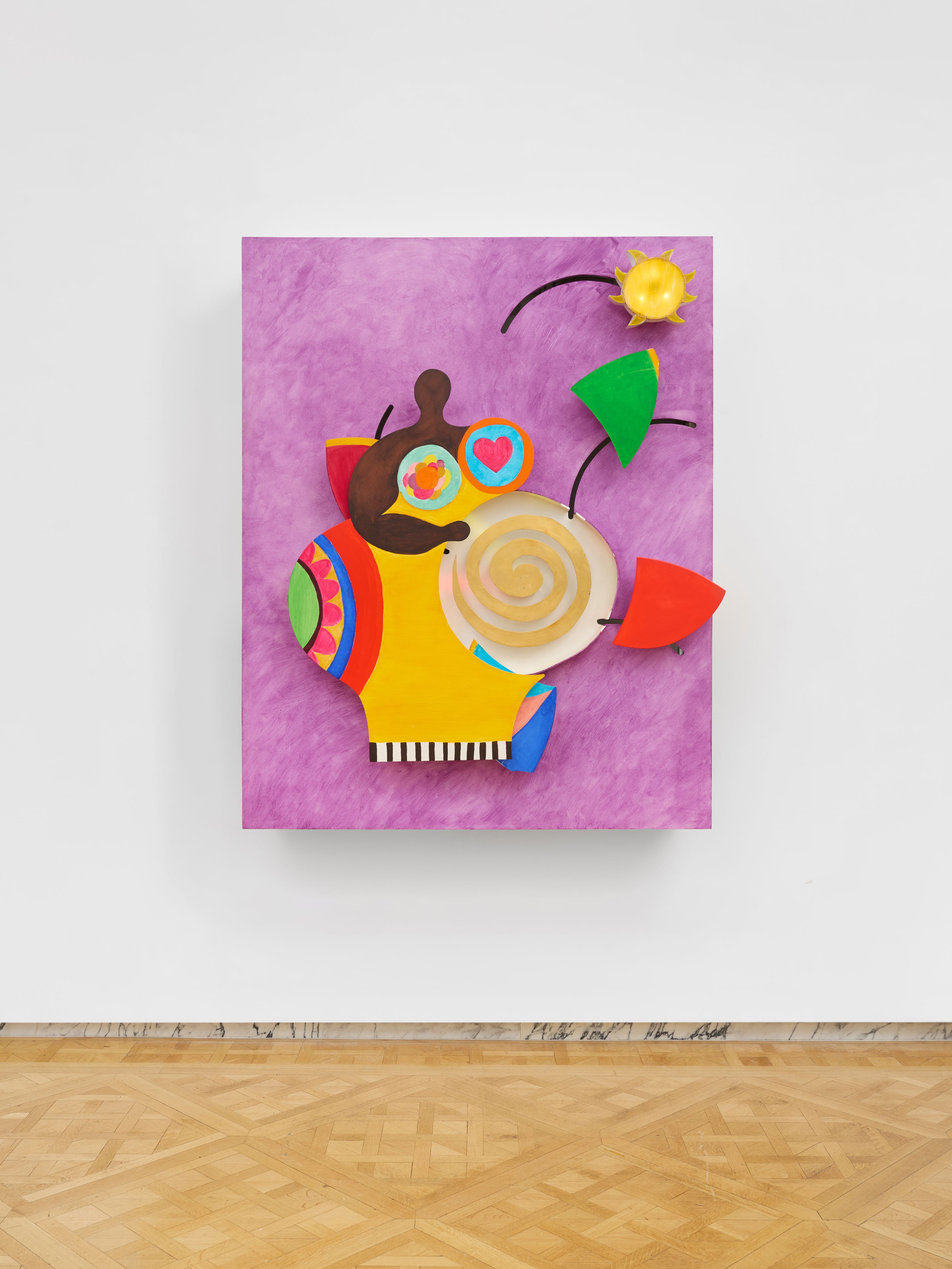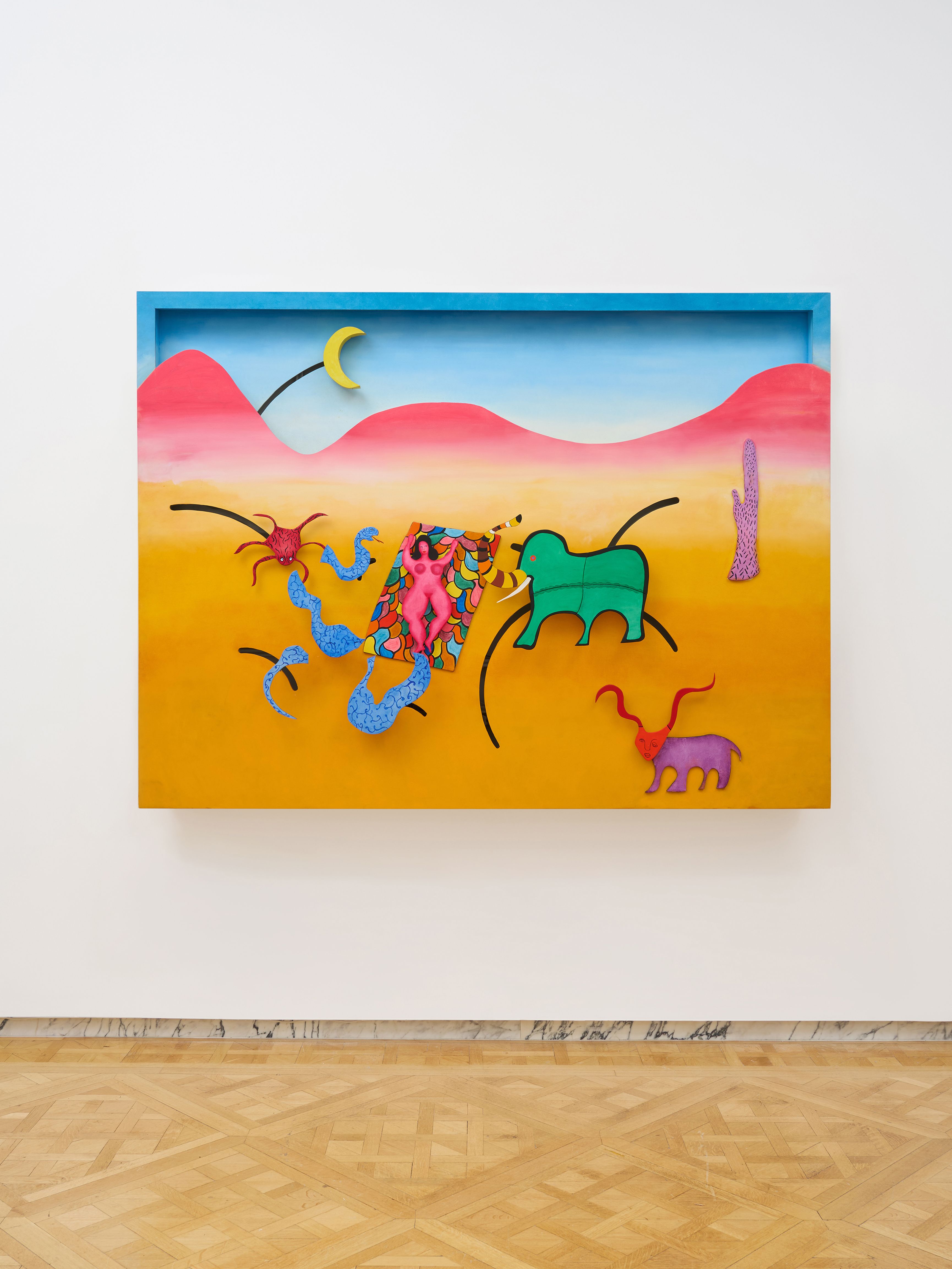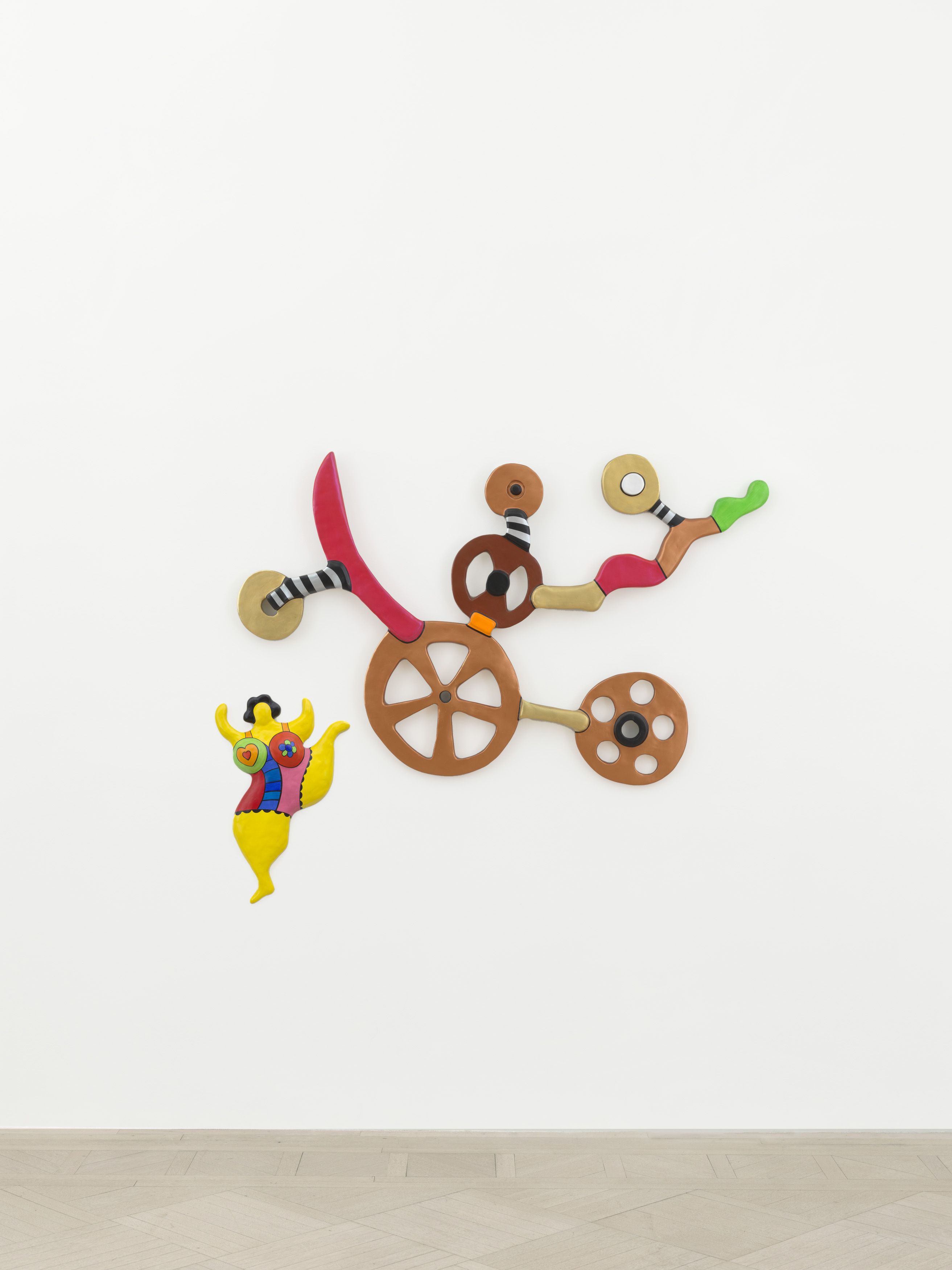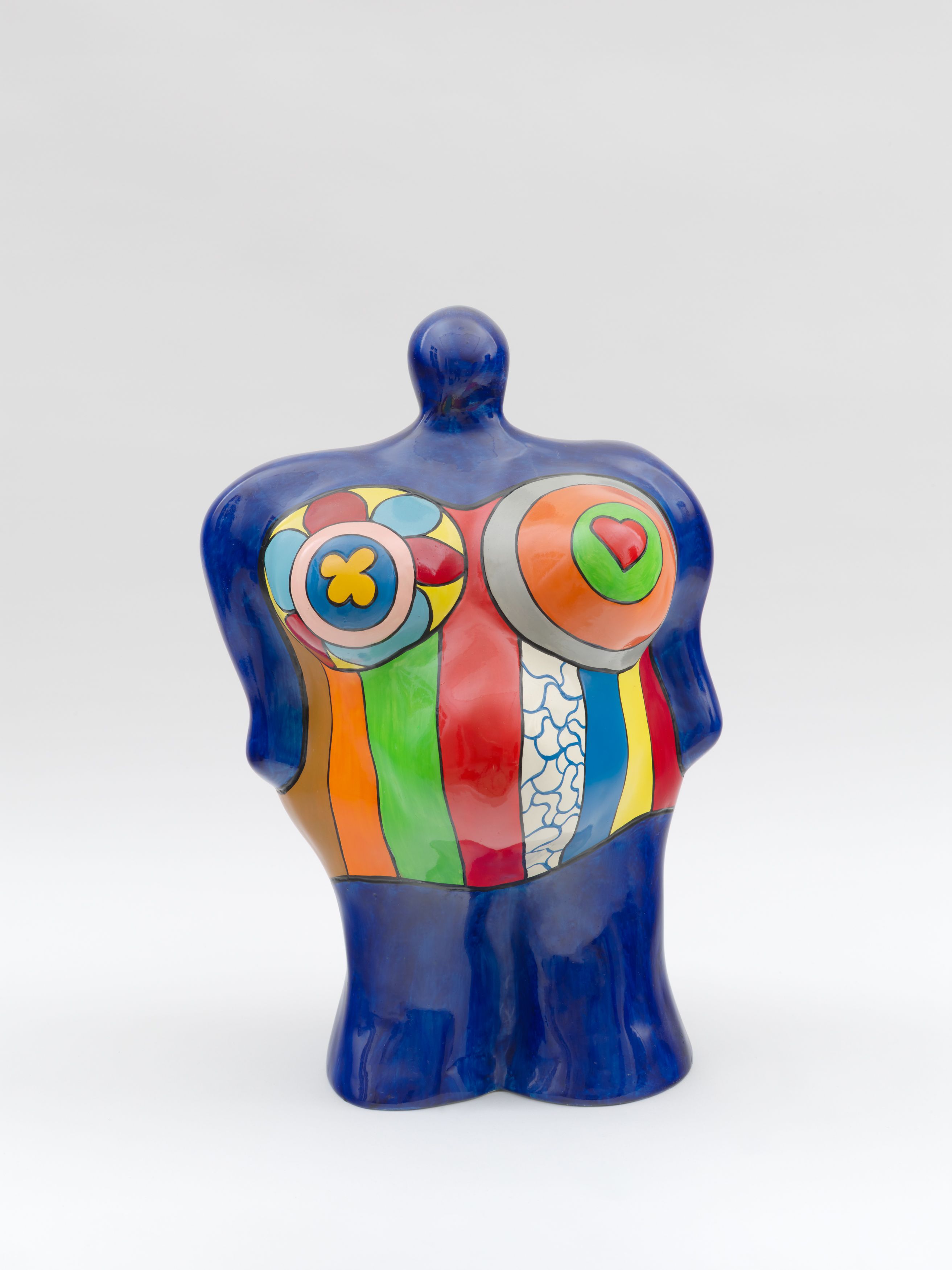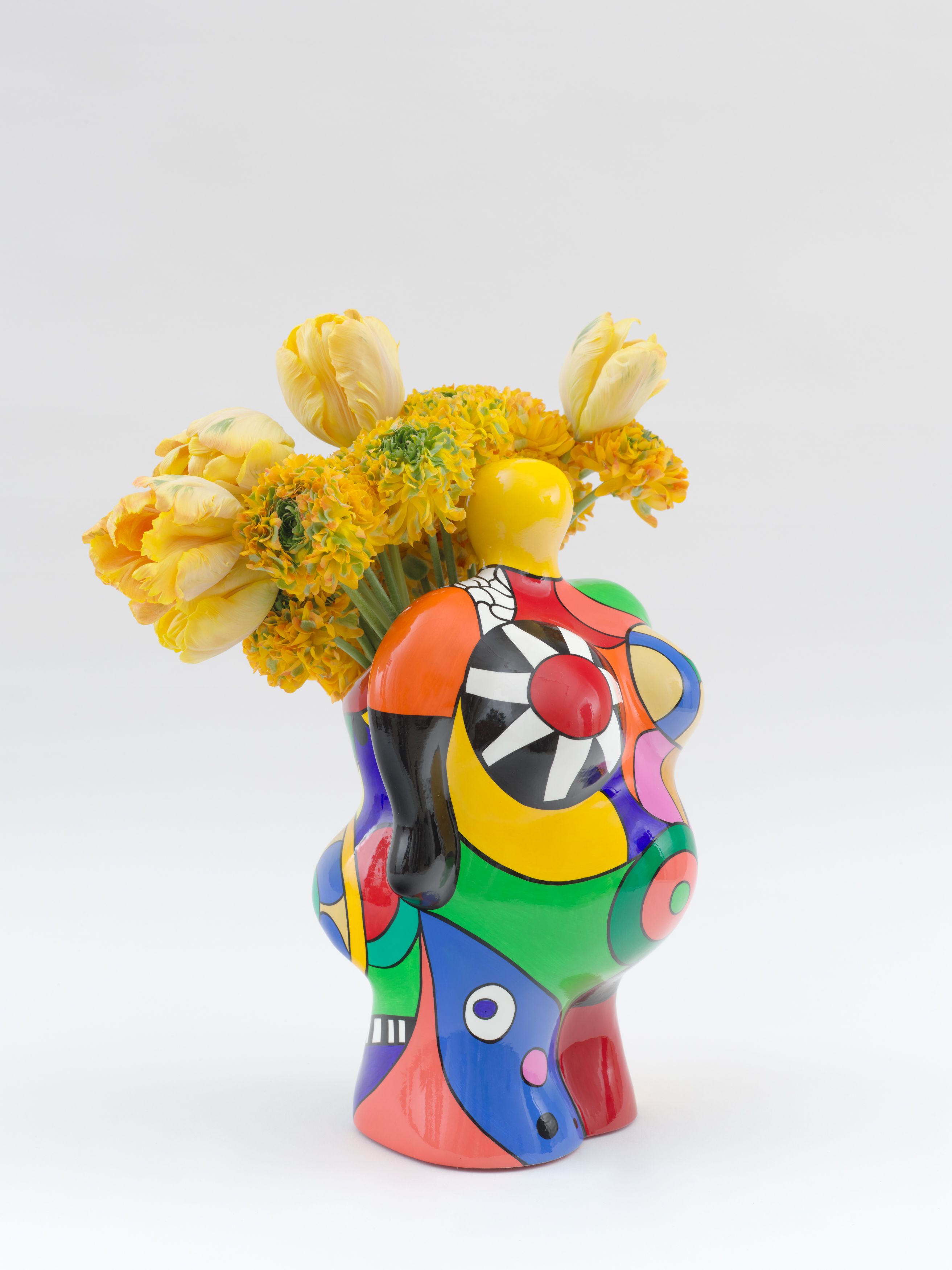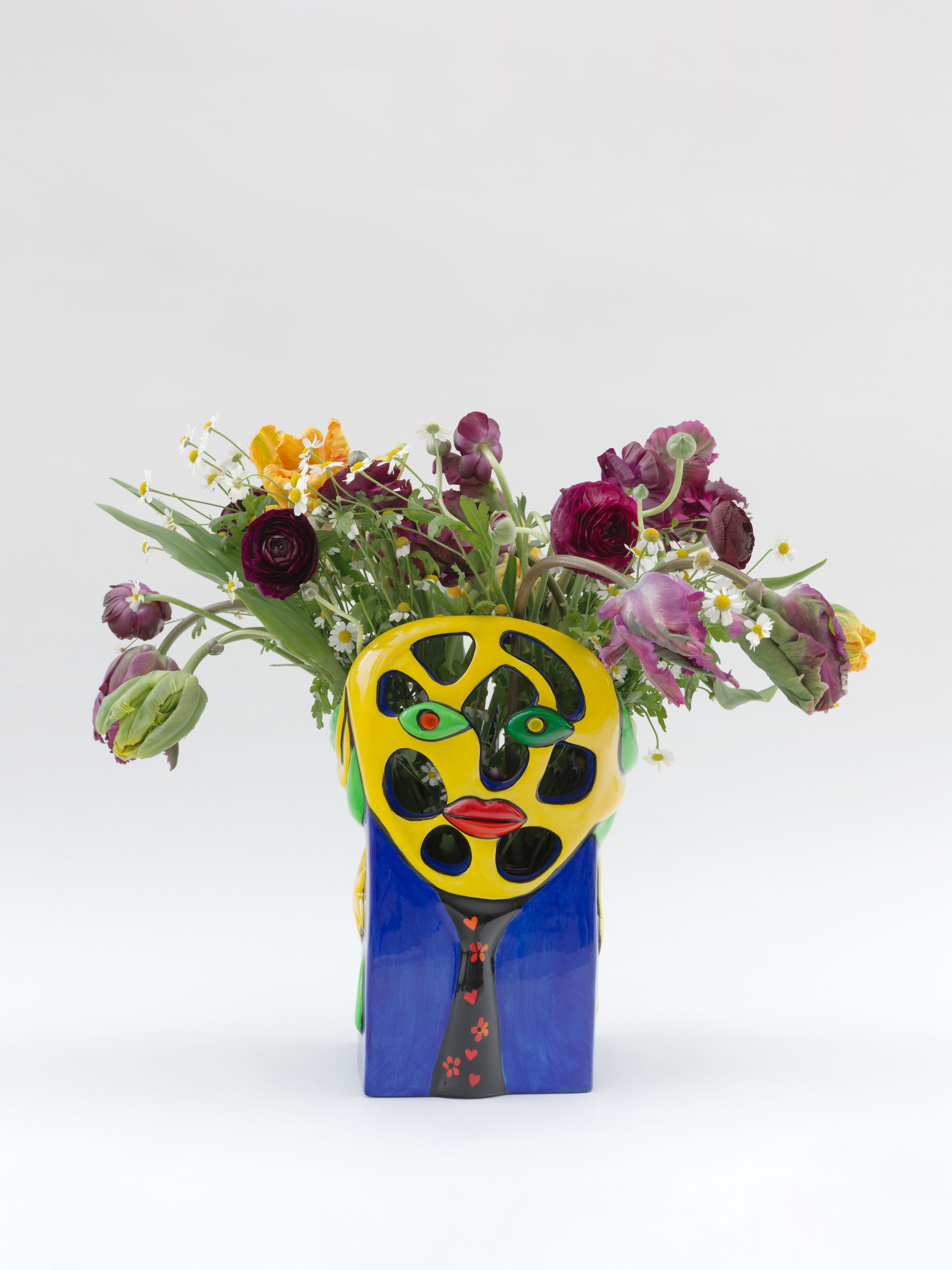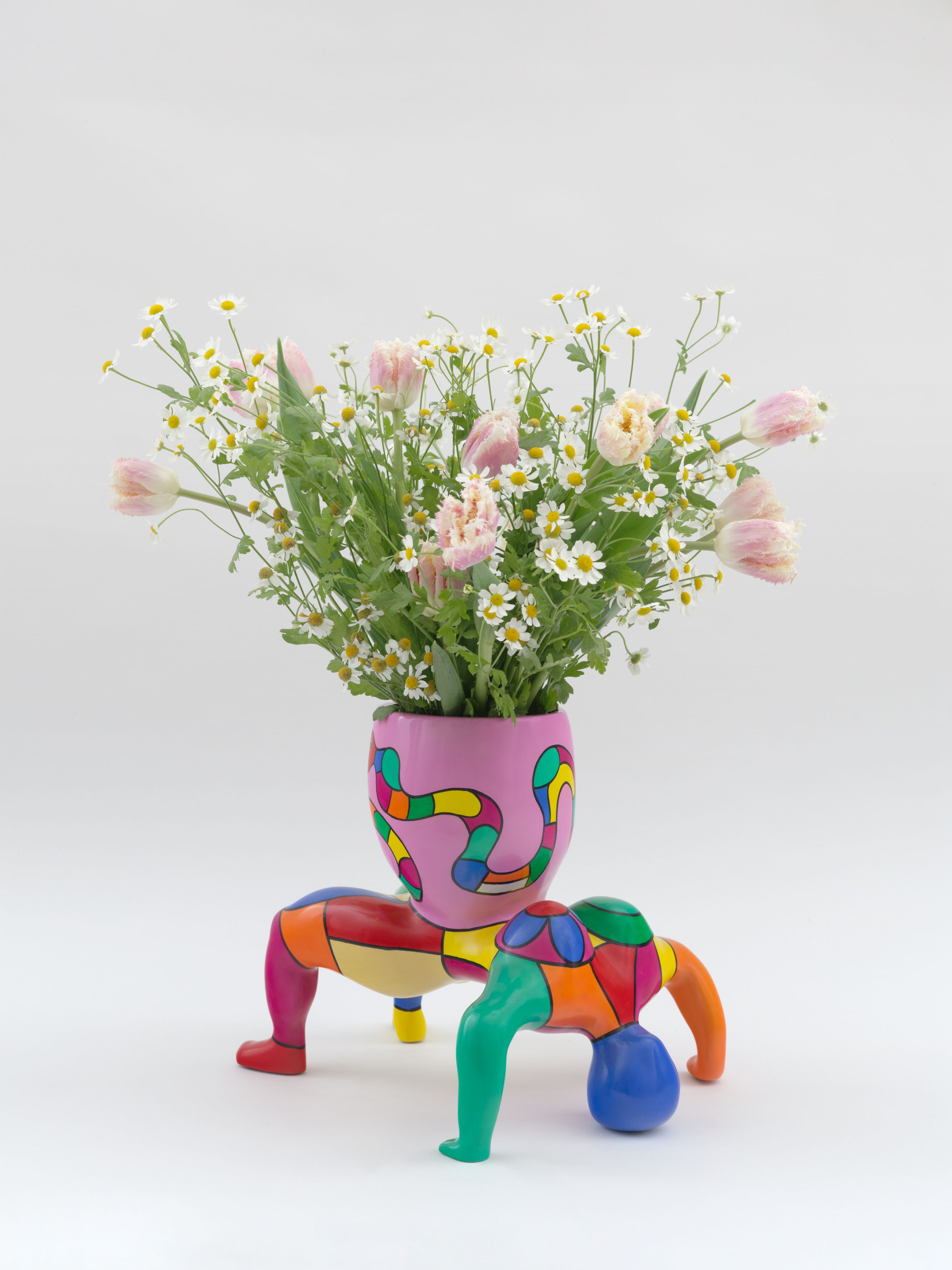
Niki de Saint PhalleTableaux Éclatés
“With this work...I began to reassemble the shattered pieces of my soul and psyche.”
— Niki de Saint Phalle
Installation Views
Artwork
This April, Salon 94 is proud to present our second solo exhibition of French-American artist Niki de Saint Phalle, featuring five works of her late-career Tableaux Éclatés, the series first exhibited in her retrospective at the Musée d'Art Moderne de Paris in 1993. The dynamic Tableaux Éclatés (“Burst Paintings”) are vibrant, mechanized pictures depicting landscapes upon which animals and still lifes, as well as her trademark Nanas, dance across beaches, deserts, and seas. Each painting’s composition is animated through an intricate motorized armature activated through a photo sensor: when the artwork recognizes a viewer, internal motors trigger motion of the work’s disparate elements or illuminate the scene with brilliant electric bulbs.
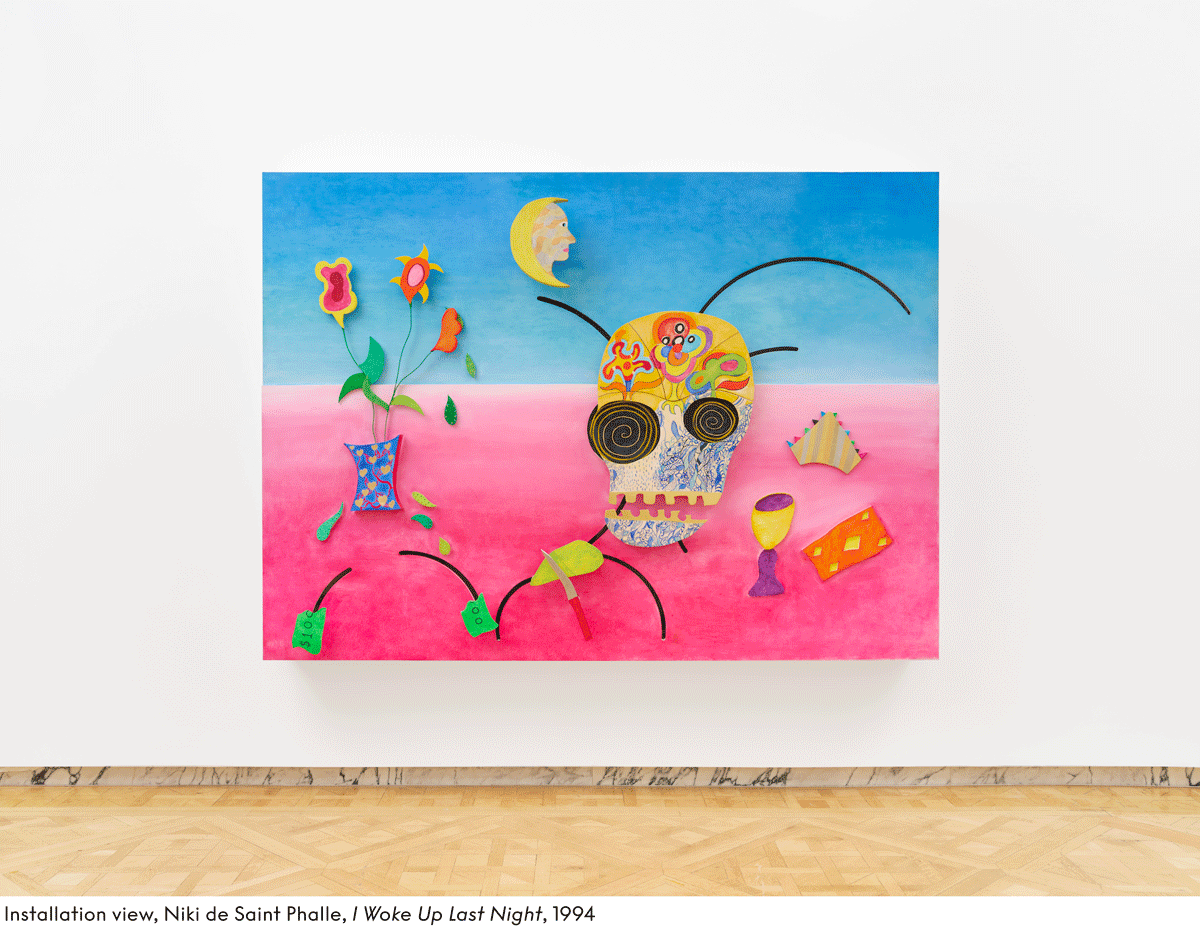
Performing in the Tableaux Éclatés are Saint Phalle’s iconic 1960s Nanas, emancipated women whose shapely bodies and colorful regalia profess a playful, assertive, and feminist affirmation in opposition to the passive odalisques common throughout Western art. Other Tableaux Éclatés are rife with art-historical symbols: the skull and flowers in I Woke Up Last Night (1994) recall vanitas paintings of European Old Masters that picture the fleeting pleasures of earthly life—though Saint Phalle’s interpretation is novel for its remixing of the still life as moving in perpetuity. Following the death of her husband, Swiss artist Jean Tinguely, in 1991, and the development of her own ailments, Saint Phalle also searched for answers about life after death across religions. She was taken by the story of the Hindu deity Ganesh, who lived after decapitation and came to represent rebirth in the face of hardship. The spiral—a recurring theme in the artist’s life and perhaps the oldest known symbol of life’s cycles of birth and death—finds eternal rotation in the belly of La Déesse Noire (1993), whose womb is a golden treasure and borrows its form from the tiniest strands of DNA to the immensity of galaxies, as well as the coils of her friend Alexander Calder—and, of course, the motors of Tinguely.
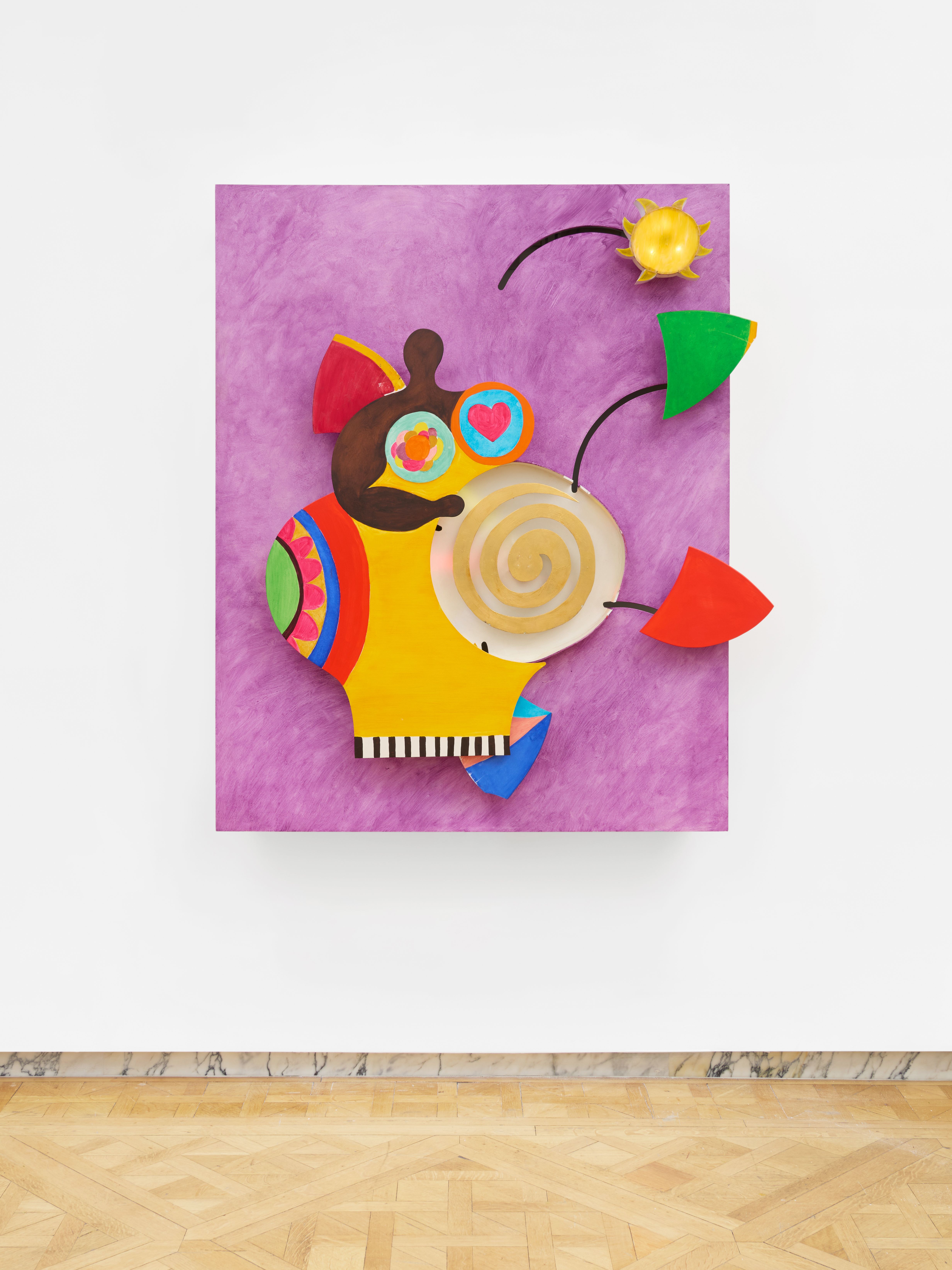
Niki de Saint Phalle, La Déesse Noire (1993)
Saint Phalle’s return to the United States and its diverse landscapes also finds form in these works. She visited and depicted the deserts of California and Arizona, using those locales to set fantastical scenes populated by creatures both real and imagined. In The Treasure of the Borrego Desert (1994), whales, dolphins, and Nanas swim in a vast blue ocean as a luminous sun rises and sets continuously. The central mountain peak and foregrounded marine life rearrange in ways both playful and menacing. This depiction of the fragile harmony of wildlife and humanity points to the artist’s growing awareness of environmental destruction and the vulnerability of all life. She also made a series of prints with this imagery on view in the exhibition. Indeed, Saint Phalle’s move to La Jolla, California in 1993 came as a result of the artist’s struggle with a debilitating respiratory illness; the Pacific’s ocean air revived her, and she maintained an active practice for the following nine years. In The Treasure of the Borrego Desert, the mountain splits to reveal one of the original Nanas from Saint Phalle’s childhood in New York: the Statue of Liberty, the prototypical symbol of freedom embodied in the figure of a woman.

Detail view, Niki de Saint Phalle, The Treasure of the Borrego Desert (1994)
Shortly after a stay in New York in 1991, and shrouded in mourning, she wrote:
I needed to be alone with my grief...The East River became the RIVER STYX. Sometimes I imagined each boat carrying Jean’s mortal body in a golden coffin taking him to his new mysterious life. I thought also of all the close young friends who have died over the last few years of AIDS. Being in the city, my city, I started to think about the life around me. The vibrant city life, visually exploding, rushing, energies bursting. Other thoughts took hold of me. How the world was fragmenting into racism, religious -isms and hates. Out of this dark journey came light. I had a vision of a painting exploding, then coming together — REJOINED. (1)
Inspired by Tinguely’s practice of kinetic Méta-reliefs, Saint Phalle took up dynamic movement in her own work. She invented new strategies for animating two-dimensional relief paintings, as she did previously when she aimed her rifle at canvases in her Tirs (“shooting paintings”) of the early 1960s. She again found a way to go beyond the limits of the medium, making the framework burst and fragment and come back together again through the introduction of unexpected movement: to be rejoined. The Tirs series saw the artist’s spectacular creation of a painting by shooting a gun at the canvas, creating composition by exploding containers of concealed paint in happenings that evolved in their performative nature. Forty years later with the Tableaux Éclatés she revisits performance, this time in the work, allowing Saint Phalle to delightfully reveal dynamic, complicated narratives while metaphorically coming to terms with the immense loss of her partner.
Joining the Tableaux Éclatés is Saint Phalle’s fountain, La femme et L'oiseau fontaine (1967-1988), installed inside for the first time following its U.S. debut at the artist’s MoMA PS1 retrospective in 2021. Bursting with streaming water, a bathing suit-clad Nana balances, arms outstretched in joyful proclamation, atop a bird whose wings mirror her gesture of open embrace. La femme et L'oiseau fontaine follows Saint Phalle’s commitment to public art, specifically fountains, the most famous of which, Fontaine Igor Stravinsky (1983), greets visitors to Paris’ Centre Pompidou.
This exhibition is organized in collaboration with the Niki Charitable Art Foundation.
Concurrently a retrospective of the artist’s work, Rebellion and Joy, is on view at the Nelson Atkins Museum, Kansas City, Missouri from April 27–July 21, 2024. That exhibition is organized with the Museum of Modern and Contemporary Art (MAMAC), Nice, France, which holds one of the largest public collections of Niki de Saint Phalle’s work in the world.
1. Niki de Saint Phalle and Pontus Hultén, Tableaux éclatés (Paris: La Difference, 1994).
For more information on this exhibition and the work of Niki de Saint Phalle, please contact info@salon94.com
Press
Hyperallergic
Curbed
Galerie
The Art Newspaper

